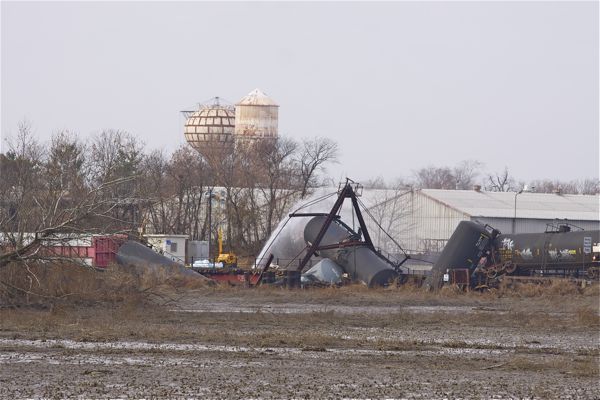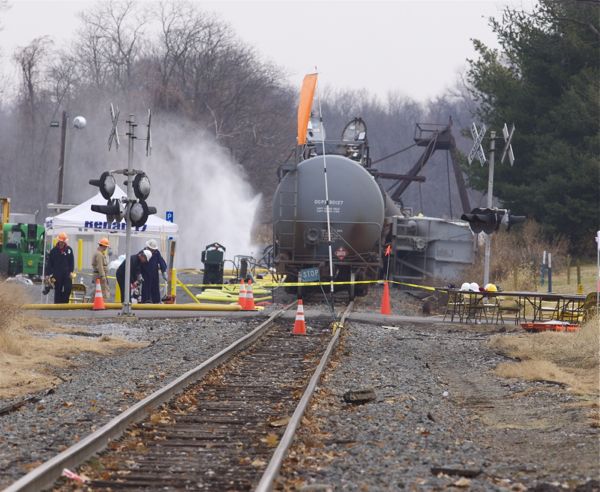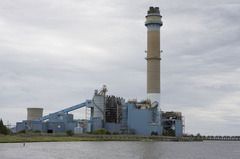ALEC Energy Industry Model Bill Passed By NJ Assembly, Sponsored by Democrats
Extremely Complex and Significant ALEC Privatization Give-Away Moving Quickly Though Legislature With Little Public Awareness or Debate
Bill Provides For Secret Contract Negotiations
At this point, virtually anyone still breathing knows about ALEC – the American Legislative Exchange Council – and the corporate interests they serve and the role they play in drafting pro-corporate stealth “model” state legislation.
So, any ALEC “model” bill must be presumed to be a stealth effort and fraud against the public interest and get extra scrutiny.
So, why are NJ Democrats supporting (another) ALEC model bill, premised on austerity and small weak government, to attack environmental protections and the public interest in ideological pursuit of privatization?
Why is none of this a scandal or discussed in the NJ media?
Even the recent NJ Spotlight quick analysis says nothing about the bill being an ALEC model and downplays the implications of the bill.
I’m getting way ahead off myself, but even without the ALEC model bill link, this alone should send up red flags, because the bill is premised upon:
The need to upgrade the State’s energy infrastructure come (sic) at a time of fiscal austerity and budgetary restraint.
In addition to the ALEC corporate model bill and austerity ideology, the bill shares aspects of what Naomi Klein has called “The Shock Doctrine” – corporate interests use a crisis to privatize public resources and push a controversial corporate agenda through below the radar.
I thought that was Governor Christie’s and the Republican agenda.
I am referring this time to the model bill from ALEC titled the “Environmental Services Public-Private Partnership Act“, a bill that:
Provides an arrangement through which government utilizes the private sector to produce goods and services that would otherwise be provided or funded completely by government.
Sounds like privatization, no?
(hit this link for a complete list of all ALEC attacks on State environmental laws and protections -be sure to scroll down to find the full list).
The NJ version of this ALEC model bill is A4082 Aca [1R] the “Government Energy Reliability and Savings Public-Private Partnership Act.”
The bill is sponsored by Assemblyman Chivikula (D-Middlesex.Somerset), Chairman of the Assembly Telecommunications and Utilities Committee , the Committee of jurisdiction, and co-sponsored by fellow Democrats Caride (Bergen/Passaic) and Eustace (Bergen/Passaic).
The bill is moving quickly and below the radar .
Austerity, privatization, energy reliability, Shock Doctrine, and ALEC. That is some combination of warped thinking and ideology that is backing this bill.
The government and taxpayer bear all the financial risk and the profits are privatized, all while promotion a fossil fuel energy industry agenda.
The bill already was approved by the full Assembly on June 24, 2013 by a mostly party line vote of 51-20.
According to the sponsors, the bill is designed to:
The bill, the “Governmental Energy Reliability and Savings Public-Private Partnership Act,” permits private entities to propose to governmental entities certain energy-related projects at governmental facilities through a public-private partnership agreement.
The bill leverages the expertise and financial resources of the private sector to foster the development of a broad array of energy- related projects, including cogeneration facilities, that might not otherwise be pursued due to budgetary constraints. The bill provides that private entities are responsible for designing, building, financing, operating, or maintaining energy-related projects for governmental entity facilities in a manner similar to the approach authorized by the “Economic Stimulus Act of 2009,” which, in part, authorized State colleges and universities to offer certain financial and other incentives to prospective private sector developers.
The bill is really about “creating a market” for private profiteers and giving away public assets and opportunities.
Under the Trojan Horse guise of creating “public private partnerships”, the bill would ensconce within State government a “P3 Unit” to promote private interests and thereby institutionalize private sector interests within State government.
This is the fox designing the hen house – it makes the traditional concept of “government capture” by special interests seem like child’s play.
That installation of private interests inside government would have significant implications.
A vague and broad definition means a whole hodgepodge of “energy projects” would qualify, making the bill effectively policy neutral – dirty fossil partnerships (fossil co-gen, CHP, garbage incineration, eta l) and renewable energy project are eligible.
Failure to restrict “partnership” negotiations – which ostensibly provide a profit premium to the private sector – to renewable energy undermines sound energy policy and virtually assures that money will drive energy policy decisions under these “partnerships”, with little public benefit to balance the subsides out.
At the same time, other provisions of the bill would undermine what’s left of the fabric of effective environmental, economic, and consumer protection/public utility regulation of the energy industry.
These so called “partnerships” pose strong potential for abuse and are rifle with corruption, insider dealings, crony capitalism, pay to play, and other ripoffs.
The concept of “energy reliability” has been used to scare people of NJ into approving and paying for boondoggle projects, e.g. threats like: “the lights will go out if we don’t do this”.
So called necessary “energy reliability” projects include billion dollar boondoggle inter-state electric power distribution lines like the Susquehanna-Roseland project through the Delaware Watergap; construction of new in-state gas power plants; dangerous and destructive gas pipelines through NJ’s most sensitive forests, under the Wanaque reservoir, through the Pinelands, and in NJ’s densely populated urban areas.
The bill would set up a confidential, secret, and non-transparent contract negotiation process – with exemptions under NJ Open Public Records Act for “proprietary” and critical economic info- for “partnership agreements” between government and the energy industry.
That process is rife with potential for abuse – revenue sharing agreements and all sorts of kickbacks and corrupt financial games are encouraged.
The bill would expand current deregulation, privatization, and subsidies to the energy industry, and without effective safeguards and controls, adequate government oversight, public involvement, transparency, or countervailing public interest benefits.
The bill amounts to a giveaway to private interests at the expense of the taxpayer, the environment, and sane energy policy.
Tellingly, the professional, independent and non-partisan Office of Legislative Services was unable to prepare an estimate of the costs of the bill.
That alone should send up a huge red flag – ripoff!.
But none of these issues have been discussed, except within Trenton circles.
Deregulation and privatization of the energy industry have been disasters. So has so called “negotiated procurement” led to widespread abuse (e.g. see the “McEnroe” 1985 law that involved negotiated contract process to build garbage incineration, while deregulating the profits made at those facilities.)
So why are Democrats pushing this ALEC model bill that would promote all this?




